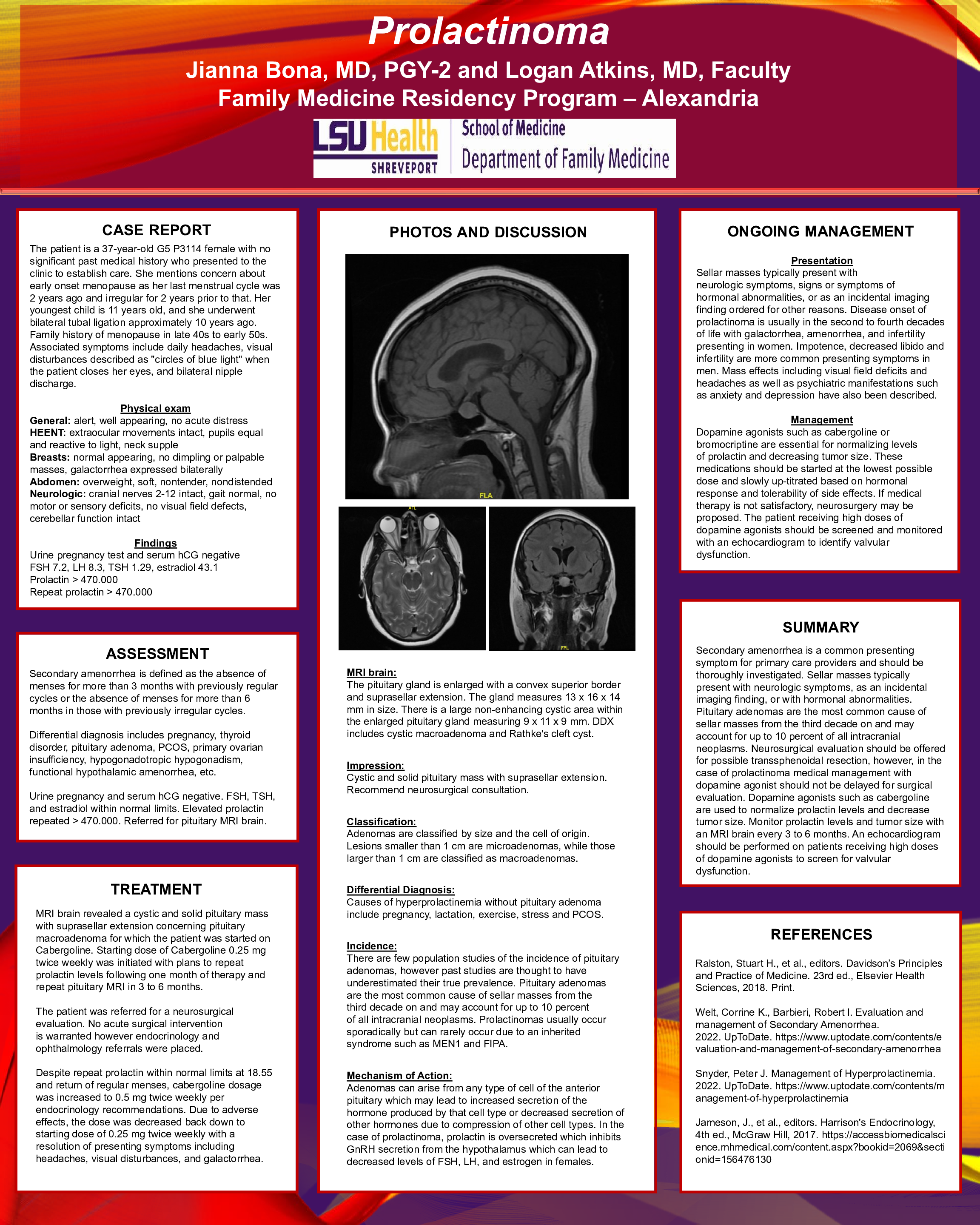Abstract
Secondary amenorrhea is a common presenting symptom for primary care providers and should be thoroughly investigated. Sellar masses typically present with neurologic symptoms, as an incidental imaging finding, or with hormonal abnormalities. Pituitary adenomas are the most common cause of sellar masses from the third decade on and may account for up to 10 percent of all intracranial neoplasms. Neurosurgical evaluation should be offered for possible transsphenoidal resection; however, in the case of prolactinoma, medical management with dopamine agonists should not be delayed for surgical evaluation. Dopamine agonists such as cabergoline are used to normalize prolactin levels and decrease tumor size. Monitor prolactin levels and tumor size with an MRI brain every 3 to 6 months. An echocardiogram should be performed on patients receiving high doses of dopamine agonists to screen for valvular dysfunction.






